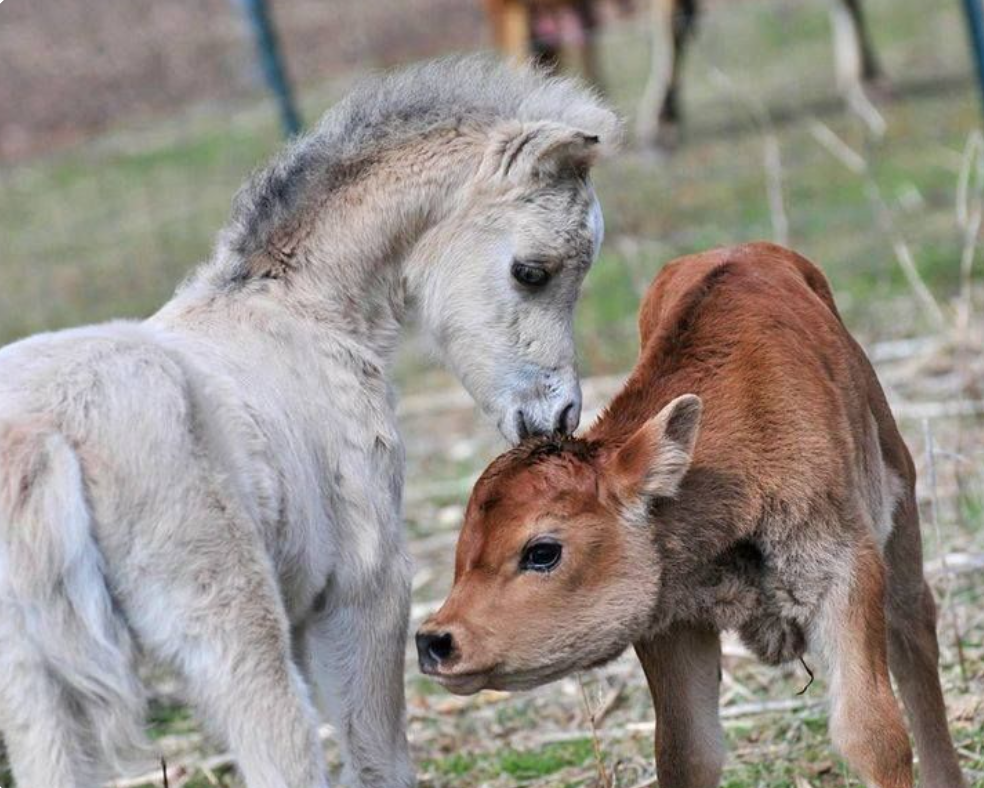Biosecurity for foals and calves
Biosecurity is critical in all farms, but especially when working with young animals. Foals, calves, lambs and crias are really susceptible to disease during their first few months of life. This is especially true if they are premature, small, or were exposed to stress while developing.
As we house more animals in tighter spaces, breeding and foaling/calving animals in covered barns, many of the pathogens are being concentrated, leading to increased disease. Mother nature combatted this by having livestock give birth on open, grassy ranges, far apart. Sunshine, dehydration, and time are some of the best disinfectants available, even today!
To make up for this challenge in our modern farm and barn environments, hygiene become critical to bring the pathogen load back down to a low level. This means developing our “biosecurity”
What is biosecurity?
Biosecurity is made up of 3 components: cleaning, disinfecting, and avoidance.
Cleaning:
Cleaning is the act of removing organic material and disrupting the surfaces of objects using soaps and detergents. The CDC describes the act of “cleaning” as: using soap (or detergent) and water to physically remove germs from surfaces. This means that you have the mechanical removal of material by scrubbing, thermal removal by using hot water, and chemical removal with detergent working together.
Cleaning does not kills all the germs, bacteria, viruses, and prions, but it can reduce their number and limit spread. Most importantly, cleaning allows disinfectants to actually work!
Disinfectants:
Disinfectants are chemicals that disrupt the molecular surface of pathogens and kills them. When a disinfection method is 100% effective, it is called “sterilization”. Unfortunately, there are few products and situations on a farm that can truly be sterilized. However, the better we clean, the better the disinfectants can work, and the fewer germs remain.
Some disinfectants can penetrate organic material (somewhat) whereas organic material can deactivate others! Some biosecurity protocols state that the cleaning and disinfection steps should be repeated twice or even three times! Bleach is a classic example of a disinfectant that can work brilliantly on almost all pathogens – once the surface is clean. Bleach is unable to penetrate dirt and manure. Below are a list of some common products that large animal quarantine facilities use:
- 5.25% Sodium Hypochlorite (NaOCl) aka. household bleach @ 3% = Add 3 gallons of chlorine bleach to 2 gallons of water. Mix thoroughly. Replace every day.
- Acetic acid* 45% = Add 6.5 ounces of glacial acetic acid to 1 gallon of water. Mix thoroughly. [FYI Vinegar is a 4% solution of acetic acid]
- Potassium Peroxymonosulfate and Sodium Chloride (i.e., VirkonS) = 1% Follow label directions. Replace when color changes from pink to pale pink.
Avoidance:
My personal preference when it comes to biosecurity, however, is avoidance. Avoidance of exposure; avoidance of contamination; avoidance of spread.
How can we avoid the spread of pathogens? There are 2 key component of “avoidance”: 1) barriers and area designation, and 2) dedicated supplies.
The first step seems simple – avoid going to areas without taking proper precautions. This means that only certain trained people should be visiting babies, or handling their food/water/supplies. The fewer the people are in these areas, the fewer the chances of issues. Signs and barriers are very helpful to remind staff to avoid entering unless required to do so. Furthermore, you can set these facilities away from busy areas to make it less tempting to cut through them or “borrow” supplies out of convenience.
The second step is often more difficult because of the waste it creates. By using disposable items whenever possible between stalls, animals, or cases. Personal protective equipment (PPE) is a simple yet very effective way to prevent the caregiver from becoming the germ spreader. Plastic aprons, disposable or dedicated coveralls, plastic boot covers or dedicated foot ware, gloves and hand sanitizer with at least 70% alcohol content, dedicated medical supplies (thermometers, stethoscopes, bandages, blankets, etc)… Essentially we want to avoid sharing because, as mentioned above, sterilization of items is hard to achieve!
Ask for Help:
Your veterinarian may have good advice on some biosecurity suggestion for your farm depending on the pathogen you are dealing with and the set up of the facility. When in doubt, you can also reach out to us at CLASS consulting for a detailed biosecurity audit. We will provide recommendations in a report that is pathogen and farm-specific.

